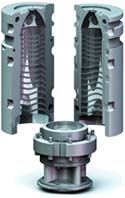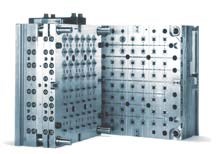Using ERP for Better Decision-Making
It has become more essential to know exactly what is going on in your business—not last year, not even last month—but at this very moment.
Many moldmakers have only a very rough idea of what it costs them to build the jobs that are going through their shop. For this reason, they will face some tough challenges. The moldmaking business has never been an easy one, but the onset of global competition, a shrinking customer base and rising costs make today’s business environment tougher than ever before. This is why it has become more essential to know exactly what is going on in your business—not last year, not even last month—but at this very moment.
Most moldmakers have a mixture of different systems—shop floor, accounting, customer relationship management (CRM), quoting, etc. The problem with this approach is that it takes time—often a month or longer—for information to wind its way from one system to another before it can be used to make critical decisions. The chances are that by the time you find out, it will probably be too late. What’s needed today is an enterprise resource planning (ERP) system that integrates all major aspects of your business activity and provides managers, as well as individual contributors, with the information they need to make the right decisions without any delays.
Challenges with Non-Integrated Systems
Many moldmakers purchase or develop software one piece at a time on an ad hoc basis to meet their immediate needs. They have what is called a management information system (MIS) that runs the shop floor—a custom system that is developed specifically for your shop. With this system you are responsible for improvements, which means that changes are expensive. Every sales representative has spreadsheets that they use for quoting jobs. An off-the-shelf accounting system is purchased, but the MIS software and accounting system are never able to communicate with each other.
Each of these systems does the job for which they are intended without any major deficiencies, but these systems do not talk to each other. As a result, you are left with the monumental task of manually moving data among the different systems.
Sales representatives have no real CRM tool so quoting and estimating are a very non-uniform process. Extensive information from the MIS has to be entered into the accounting system, including what products were shipped to what customers, what raw materials were used, what materials were purchased, and so on. Transferring information between systems takes time and is prone to data entry errors. But the worst problem of all? There is always more data waiting to be transferred from one system to another. None of the systems can be relied upon to provide current information.
Conventional ERP Systems Are Not the Answer
Most industries have, over the past decade, moved to ERP systems to address this type of issue. ERP systems are designed to capture all of the information involved in running a manufacturing business—such as sales orders, purchase orders, inventory, work orders, labor, financial accounting, and more—into one system that can be used for reporting and decision-making. The moldmaking industry is one of the few where most companies have not implemented ERP systems. The reason? Moldmakers, like most engineer-to-order manufacturers, face special challenges that ERP systems have traditionally not been very good at meeting. ERP systems have traditionally been designed for companies that make relatively few products in relatively high volume.
Moldmakers, of course, face an entirely different challenge of designing and building nearly every order to meet a specific customer need. These companies need to be able to provide accurate cost estimates to customers, manage all aspects of complex projects, and deliver on time and on budget, while keeping a close eye on cash flow. Most importantly, moldmakers need an accurate picture of the profitability of each project in order to assess its business impact and make informed decisions about the types of jobs they should seek out in the future, not to mention how to quote them.
Most moldmakers think they need an ERP system for standardization purposes, and this is not the case. An ERP solution for moldmakers should drive processes and efficiencies that maximize the value of (and report on) each unique project—supporting the very nature of the moldmaking business. Repetitive, automated, standardized processes are not the answer.
ERP Software that Adapts to Moldmaker Needs
Recently, several ERP software vendors have made a major effort to address the challenges of engineer-to-order companies like moldmakers. These ERP providers have taken the approach that even if every mold you make is different, you can still benefit from the implementation of systematic procedures and common components while enabling information to flow flexibly and instantaneously through all functions and areas of the company.
ERP software designed for moldmakers typically begins with the critical quoting process. The most versatile systems offer several approaches, the simplest of which is simply estimating with a rolled up summary of large buckets of time or dollars. A more detailed approach may be provided based on router steps or a bill of materials (BOM) copied from previous jobs or estimates or creating each line from scratch. Some ERP systems can also interface to spreadsheet-based estimating tools.
Engineering
Integrating engineering with manufacturing and purchasing is a key requirement for moldmakers. ERP systems designed for moldmaking should link popular 2-D and 3-D CAD packages with production orders. The most advanced software provides revision-level control and gives the engineer access to existing part information through the ERP system, eliminating the need to create a new record for an existing item. Any users, even without a CAD workstation, can view the drawing and overlay changes or comments without affecting the original version.
Moldmakers purchase most materials for a specific job, so it is important that the ERP system avoid the constraints of an inventory-based system that requires all item transactions be checked into inventory before use. An ERP system designed for moldmaking should provide multiple ways to create a P.O. Ideally, it should be possible to enter orders manually or use dependent demand planning (DDP) to create suggested purchases on a time-phased basis.
Production Scheduling
A key advantage of ERP designed specially for moldmakers is that it can automatically schedule your production to take into account constraints—such as capacity, materials, tooling and labor pool—to determine the best possible schedule. The software lets you schedule in simulation mode, with or without material constraints, to see the effect of various scenarios before committing to the production plan.
Another benefit of ERP is that it ties together financial accounting with all other operations of the business. As a result, financial reports are continuously updated to provide current information. Project management information also moves seamlessly into financial accounting, eliminating the need for time-consuming, consolidating entries, and making it possible for management to obtain a real-time picture of business performance.
User-defined thresholds can be used to determine whether or not revenue can be recognized. If the percentage complete falls within the defined threshold, the allowable dollar value is automatically posted to the appropriate revenue accounts.
True Job Costing
With long leadtimes, manufacturers of highly engineered or complex products demand true job costing in order to recognize revenue throughout the lifecycle of a project.
Software supporting a moldmaker should collect actual costs throughout the entire production process. Moldmaking businesses need immediate and complete visibility of the project plan. They need to be able to tell—at any point in the job—if the project is on target to make a profit.
What’s more, ERP systems designed for moldmaking are not your typical item-based applications. Moldmakers need the ability to buy, sell and ship items that are not pre-defined to an item master. They also need to be able to collect actual material costs at the time the purchase order receipt is vouchered. And they need a flexible interface that will allow them to view job costs individually or collectively rolled up into a parent project.
Summary
One solution is to implement a fully integrated ERP system, encompassing everything from CRM and quoting to production and accounting. This system will help to improve the accuracy of the information upon which decisions are based because each module of the software is tied together and information flows freely among them. Everyone in the shop can have access to the information they need. The key to success in this process is to be sure that the ERP system you select is one of the few that is designed around the particular needs of the moldmaking business.
Related Content
OEE Monitoring System Addresses Root Cause of Machine Downtime
Unique sensor and patent-pending algorithm of the Amper machine analytics system measures current draw to quickly and inexpensively inform manufacturers which machines are down and why.
Read MoreWomen Impacting Moldmaking
Honoring female makers, innovators and leaders who are influencing our industry's future.
Read MoreMMT Chats: Marketing’s Impact on Mold Manufacturing
Kelly Kasner, Director of Sales and Marketing for Michiana Global Mold (MGM) talks about the benefits her marketing and advertising, MGM’s China partnership and the next-generation skills gap. This episode is brought to you by ISCAR with New Ideas for Machining Intelligently.
Read MoreThe Trifecta of Competitive Toolmaking
Process, technology and people form the foundations of the business philosophy in place at Eifel Mold & Engineering.
Read MoreRead Next
How Shops Share Design Data with IP Protection
What to look for in your software to overcome the technical hurdles, cost factors and IP risk around sharing design data.
Read MoreHow to Use Continuing Education to Remain Competitive in Moldmaking
Continued training helps moldmakers make tooling decisions and properly use the latest cutting tool to efficiently machine high-quality molds.
Read MoreReasons to Use Fiber Lasers for Mold Cleaning
Fiber lasers offer a simplicity, speed, control and portability, minimizing mold cleaning risks.
Read More












.jpg;maxWidth=300;quality=90)






.png;maxWidth=300;quality=90)
_300x250 1.png;maxWidth=300;quality=90)










